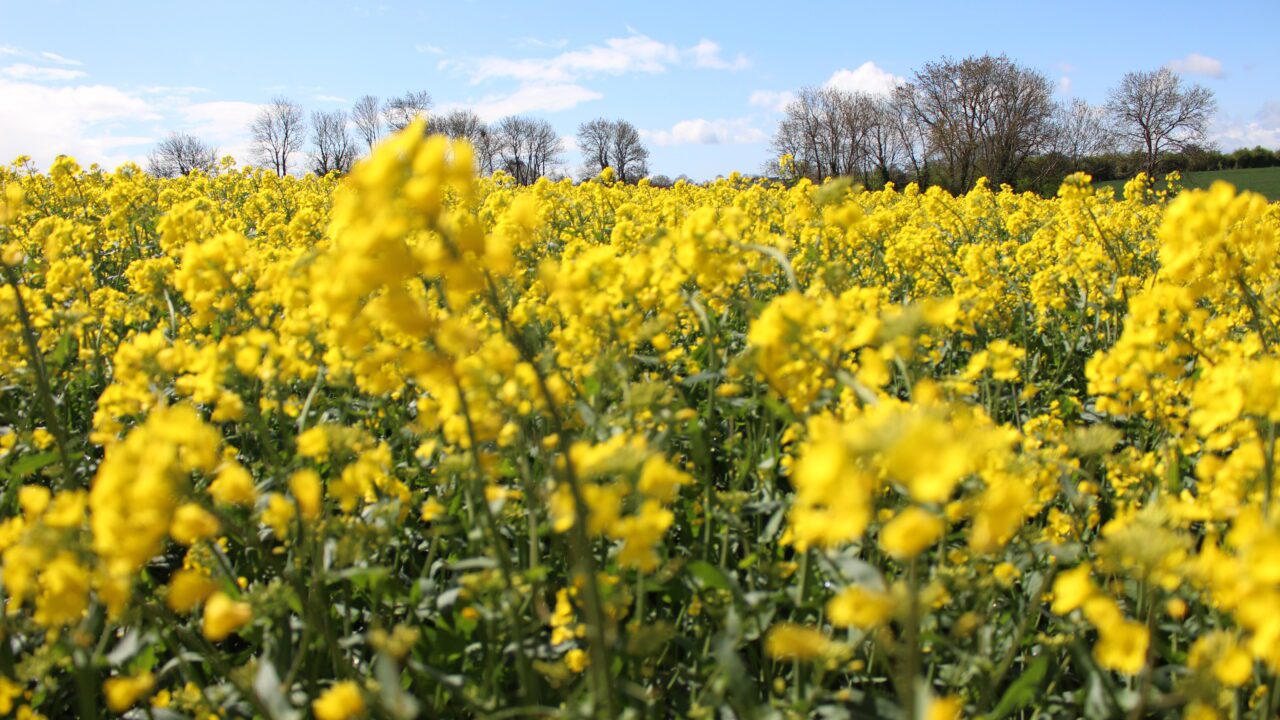Teagasc tillage specialist, Shay Phelan, has been out in the fields, assessing the early-spring fertiliser priorities of oilseed rape crops.
And, he has confirmed that crops at Teagasc Oakpark have good ground cover, which is a positive thing.
“Where you have good cover in rape crops, nitrogen is actually stored in the leaves.
“So, this is nitrogen that we don’t actually need to apply in the form of chemical fertiliser.
Phelan added:
“This is a very important consideration, given the current state of the fertiliser market.”
He said the question then becomes one of using the leaf cover area as a means of determining a chemical fertiliser recommendation for a specific crop.
He continued:
“We work this through using what’s called a Green Area Index (GAI) app. Step one is to take a number of photographs across a field.
“This ensures we get representative imagery of what the entire crop looks like,” he explained.
According to Phelan, a GAI of 1.0 equates to 1m2 of plant cover per square metre of ground. Crops with this value contain 50kg/ha of nitrogen.
He continued:
“The GAI app can be easily downloaded onto an iPhone and then it is a case of feeding the photographs you’ve taken into the app.
“For those using an android phone, it’s simply a case of downloading a similar app, which does the same job.
“The app will calculate a GAI for every photo submitted. It’s then a case of averaging the GAI values obtained across the crop.”
The GAI app will also give an indication of when nitrogen should be applied to a particular crop.
“Crops with a GAI of 1.0 will not require any applied nitrogen fertiliser until early March,” he said.
“If the GAI average figure comes back less than 1.0, then applied nitrogen would be required before the end of February.
Teagasc is also recommending the application of a compound fertiliser that matches the nitrogen, potassium and phosphorous requirements of the crop at the first application.
Growers should allow for 25-30 kg/ha of sulphur for winter oilseed rape crops in the fertiliser, this should be applied in the first and second splits.
The specific phosphorous (P) and potassium (K) fertiliser recommendations for rape crops are as follows:
- Soil index 1 – 35kg/ha of P and 65kg/ha of K;
- Soil index 2 – 30kg/ha of P and 35kg/ha of K;
- Soil index 3 -20kg/ha of P and 55kg/ha of K.
Index 4 soils require no additional applications of P and K this year.
